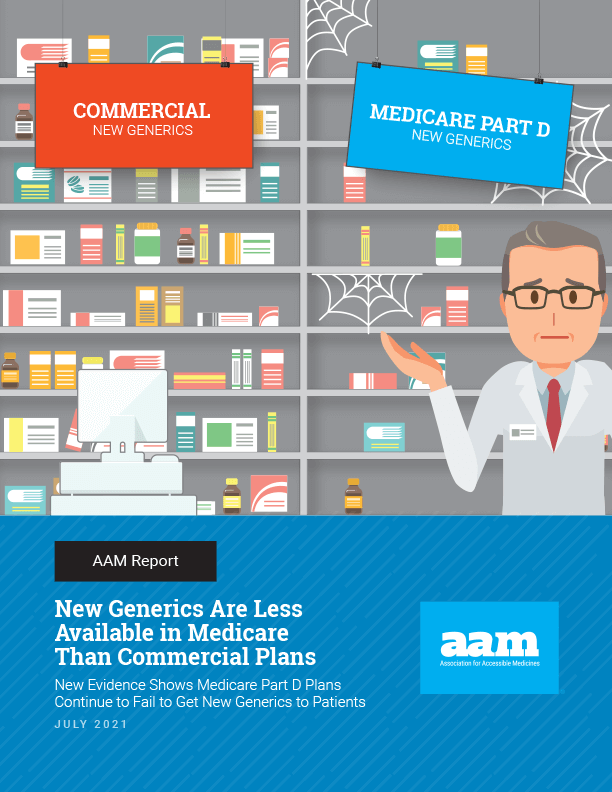New Evidence Points to a Significant Lag When It Comes to First Generics
The Medicare prescription drug program was designed to ensure that seniors have affordable access to lifesaving medicines. Unfortunately, a new AAM study finds that seniors in Medicare have less access to lower-cost generic treatments than patients in commercial plans.
First generics—drugs approved by the Food and Drug Administration (FDA) as the first competitor to a brand—benefit patients and the health care system. They represent new competition and lower prices; on average, they enter the market 40% lower than high-priced brand drugs. But Medicare prescription drug formularies are currently covering only 21% of the first generics launched in 2020. Commercial health plan formularies, by contrast, covered 66% of first generics. This is not a one-time statistical blip. It is the continuation of a trend where Medicare drug plans are significantly slower to cover first generics. Even when Medicare drug plans do cover first generics, these plans tend to place them on brand drug tiers with higher patient cost-sharing, rather than on low copay generic tiers.

The reason: skewed incentives in the design of Medicare Part D, including the Coverage Gap Discount Program and low health plan liability in the catastrophic phase of the benefit. These create a powerful incentive for plans to prioritize higher-cost brand drugs over generics, even when those generics cost less and even if it means that the Medicare program will pay more.
Congress has the opportunity to modernize the Medicare prescription drug program to encourage greater generic access, lowering costs for seniors and taxpayers alike. AAM offers these recommendations for fueling competition in the market and lowering out-of-pocket costs for seniors:
- Eliminate the coverage gap discount program and prohibit mandatory brand discounts counting toward patient out-of-pocket spending.
- Incentivize the use of lower-cost biosimilars and generics by decreasing plan liability for these medicines.
- Align plan incentives for using low-cost medicines by decreasing government reinsurance and increasing plan liability in the catastrophic phase.
- Require Part D plans to review newly marketed generics and biosimilars within a specified timeframe and provide written justifications to CMS if they are not placed on formulary.
- Create a preferred specialty tier for generic and biosimilar products with lower cost-sharing.
- Ensure that generic drugs are placed on generic drug tiers.
Bipartisan legislation such as the Prescription Drug Pricing Reduction Act (Grassley-Wyden) and the Ensuring access to Lower-Cost Medicines for Seniors Act (H.R. 2846), introduced by Rep. David McKinley (R-WV) and Rep. Ann Kuster (D-NH), would advance many of these policy goals. And these new findings add further evidence for the need for congressional action to address the perverse incentives in Medicare that encourage the use of high-cost brand-name drugs over more affordable generic and biosimilar medicines.

By Craig Burton, AAM Vice President, Policy
Published on July 19, 2021



